It is not often that we see products in the lab that have us react with a WOW these days. More often than not we see the same basic products with different components inside which offer slight performance increases. Then along came the Lenovo ThinkStation P320 Tiny. Even having experience with multiple Intel NUCs could not completely prepare us for what we experienced.
Our review sample Lenovo Thinkstation P320 Tiny gives us the power of a high-end laptop and the ability to connect multiple large 4K displays and full-size keyboards. The small size makes this setup an ideal choice for small workspaces, office use, and kiosks in display areas and those who simply do not want a large tower or cumbersome laptops. For those that prefer multi-display setups for work needs, the P320 Tiny can handle up to six. That is right, an ultra-compact form factor that supports up to six displays.
Lenovo ThinkStation P320 Tiny Specifications
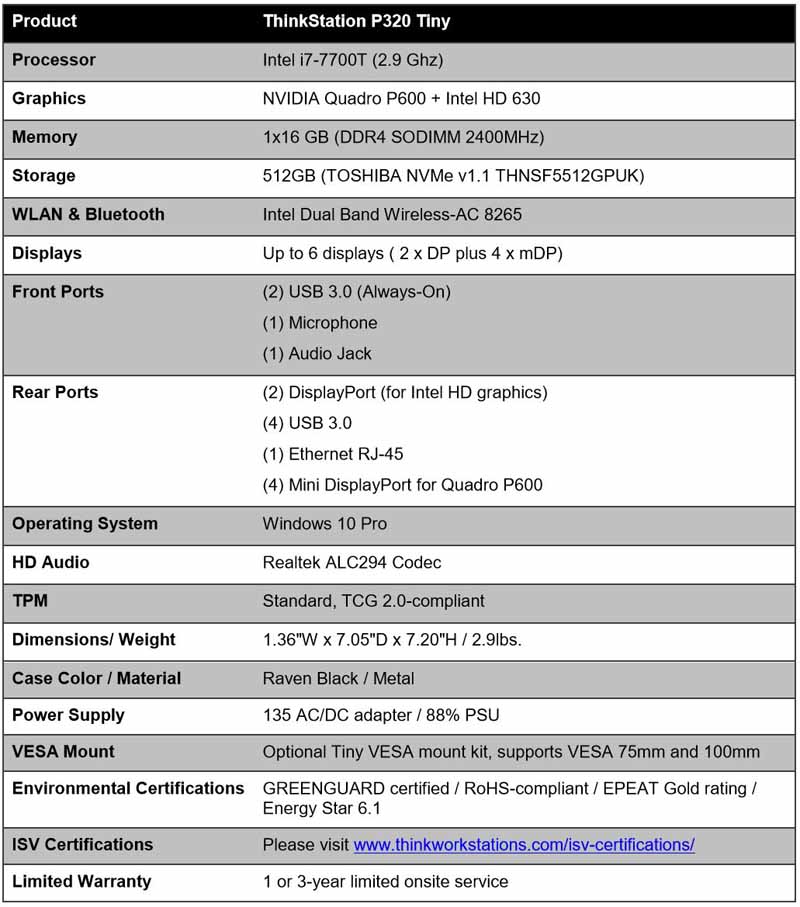
The P320 Tiny equipped with an Intel i7-7700T processor in our review unit is an interesting processor for a system like this. Turbo boost can go as high as 3.8GHz which is significant for a system in such a small package. For graphics, the P320 Tiny uses a NVIDIA Quadro P600 which supports four Mini-DisplayPort 1.4 outputs. Additional graphics outputs come from Intel HD 630 which supports two DisplayPorts. With the combined graphics outputs a total of six displays can be run from the P320 Tiny.
Close look at the Lenovo ThinkStation P320 Tiny
The P320 Tiny is not only powerful, but it is also small in size at 1.4” x 7.1” x 7.2” / 35.6 mm x 180.3 mm x 182.88 mm. With a size like this, it’s not much bigger than a DVD player and lightweight starting at 2.9 lbs / 1.3 kg.
Our review unit came with standard Lenovo packaging and also included keyboard and mouse to round out the packaging.
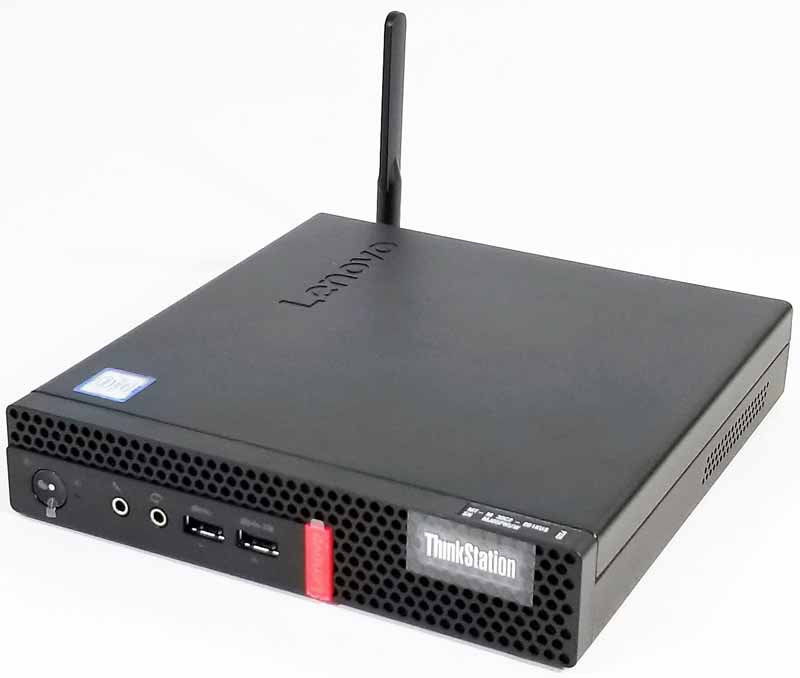
Here we show the P320 Tiny in the tabletop position. Rubber padding on the bottom helps to keep the unit from sliding on your tabletop. If you use Wi-Fi, the antenna attaches to the back by simply screwing in the WiFi antenna in place. In this position, the P320 Tiny uses a very small footprint on your table.
The upright position using the included table mount.
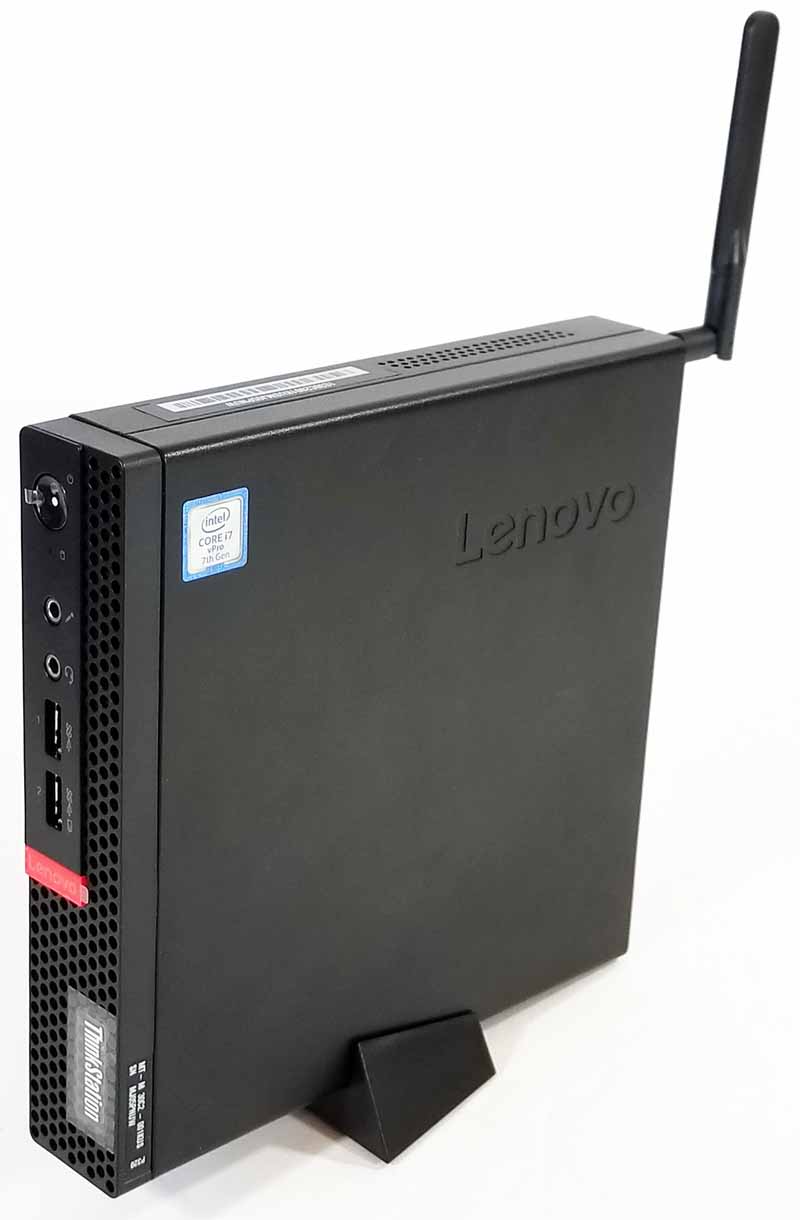
In this position, the P320 Tiny uses even less table space and looks attractive.
Let us take a look at the front and back output ports.

Front I/O Ports
- 2x USB 3.0 (1 always-on)
- Microphone jack
- Audio Jack
- Power Button

Back I/O Ports
- 4x mini DisplayPort
- Security lock slot
- Ethernet Port
- 2x DisplayPort
- 3x USB 3.0 (1 supports Smart Power On via Alt-P)
- WiFi Antenna Slot
- Power Adapter Connector
One item you may notice if you are a Lenovo notebook user is the yellow rectangle power adapter plug. For corporate IT departments, little touches like these help IT service desks immensely.
The P320 Tiny is very simple to open up and access the inside components. One screw holds the top lid in place, once removed the lid slides off.
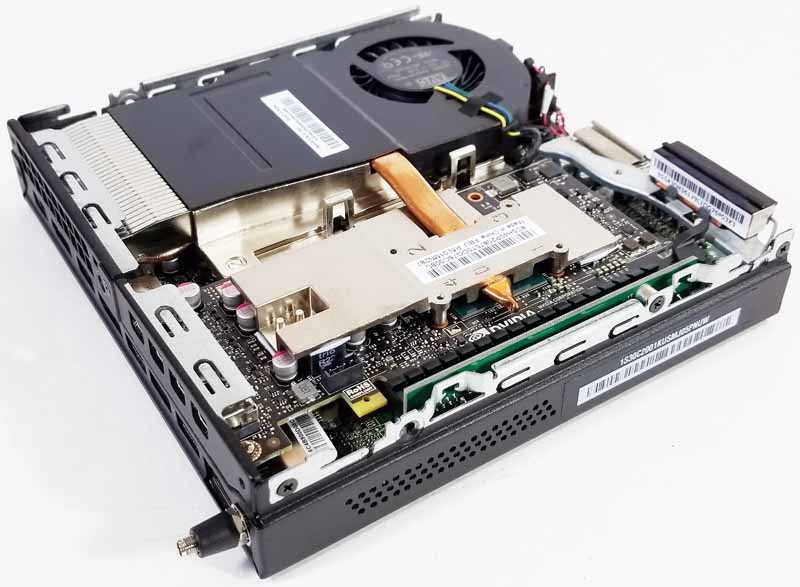
The insides of the P320 Tiny is fairly dense which is understandable for a product of this size. In this view we see the Nvidia Quadro P600 laying flat, it connects via PCIe riser card on edge. A single heat pipe connects the P600 to the main cooling unit.
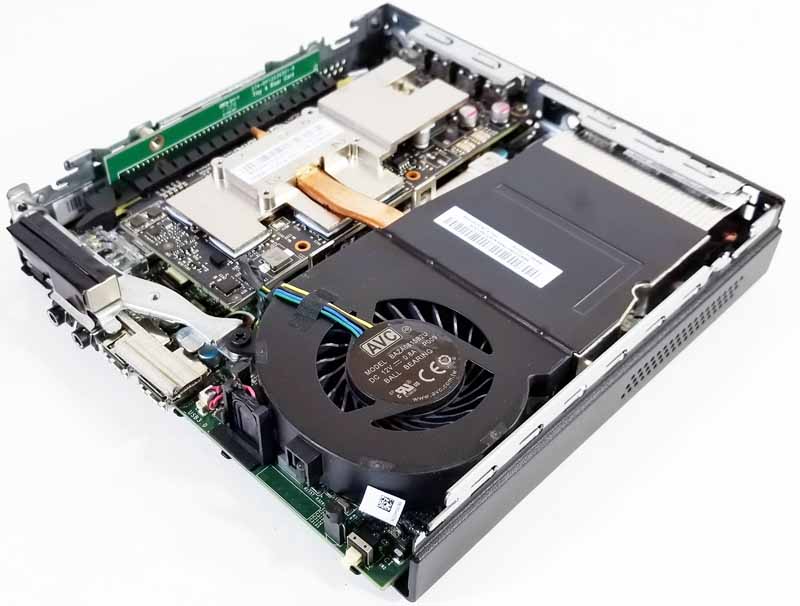
The cooling assembly attaches to the CPU underneath and is powered by a single fan. With a package the size of the P320 Tiny cooling is extremely important. A 40W TDP NVIDIA Quadro P600 is easy to cool in a large desktop, but when form factors shrink, cooling becomes more important. Lenovo makes great laptops that use higher-power GPUs so the company has in-house expertise cooling CPUs and GPUs in tight places.
Let us flip the unit over to check out the expansion slots.
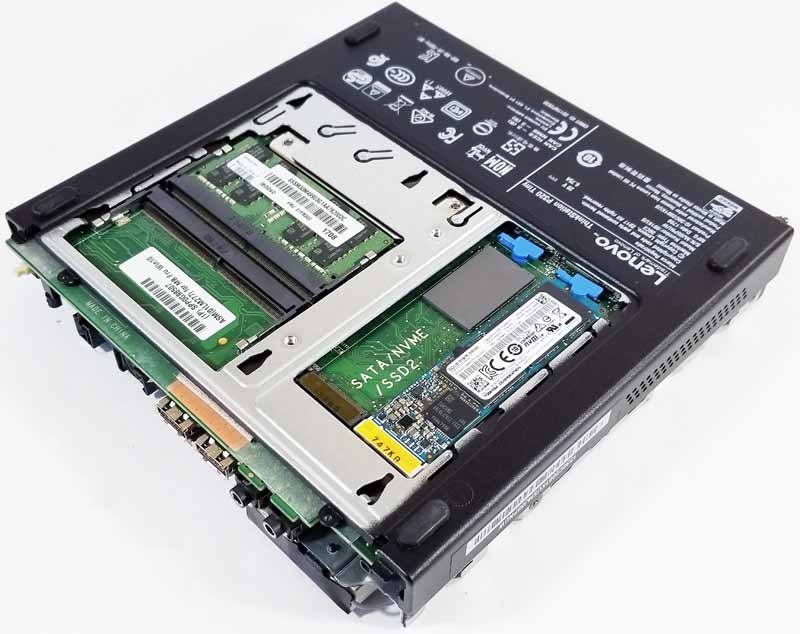
Just like the top lid, the bottom lid also slides right off to gain access to the expansion slots. Our review unit includes a single Toshiba NVMe 512GB SSD and 16GB DDR4 SODIMM for memory. We would strongly suggest getting a second 16GB DDR4 SODIMM with the unit for a 32GB total. There are additional slots for both storage and memory available for use.
Bundled Software
As we have seen in several review units from Lenovo, the supplied software is greatly improved and reduced software clutter. We now only find a single piece of software that handles all Lenovo related features.
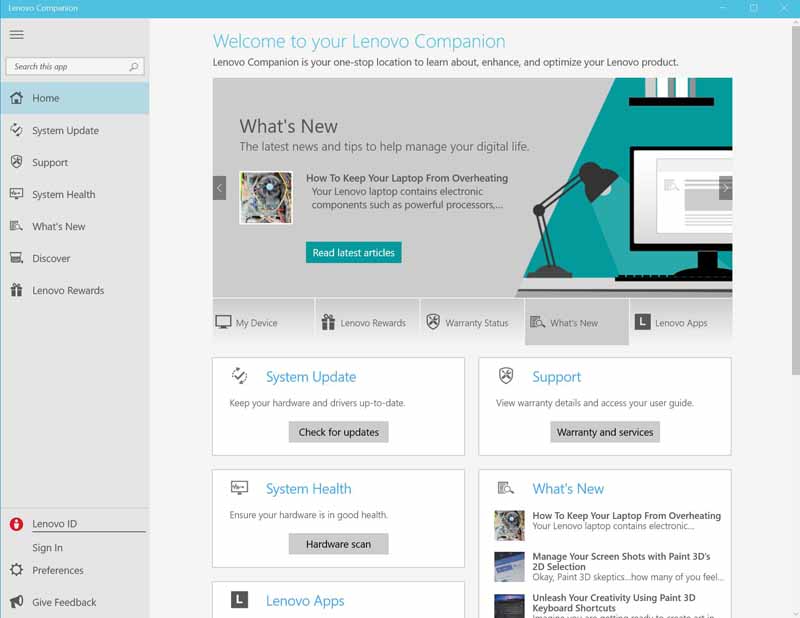
We can see on the right-hand side of the application window what features Companion include; it monitors system health, updates, support and warranty services all accessed through your Lenovo ID.
For more information, head over to Lenovo Companion to read more.
Our Test Setup
For testing, we used the Lenovo ThinkStation P320 Tiny in Reviewer’s Configuration.
- CPU: Intel i7-7700T (2.9GHz) 4 cores/ 8 Threads
- Memory: 1x 16GB DDR4 SODIMM 2400MHz
- GPU: Nvidia Quadro P600 + Intel HD 630
- Storage: Toshiba NVMe 512GB
- OS: Windows 10 Pro
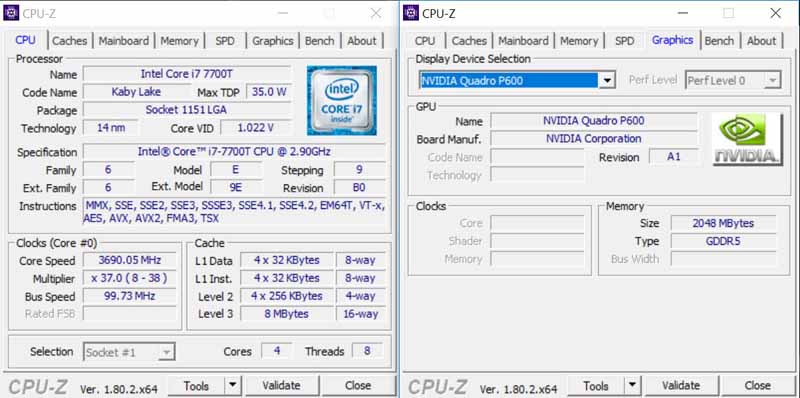
Our P320 Tiny came equipped with an Intel Core i7-7700T with four cores and eight threads CPU that can Turbo up to 3.8GHz. That is a significant step up from many notebooks that have lower clocked 2 core / 4 thread CPUs. It also comes equipped with NVIDIA Quadro P600 which can output to four displays via Mini-DisplayPort.
AIDA64 Memory Test
AIDA64 memory bandwidth benchmarks (Memory Read, Memory Write, and Memory Copy) measure the maximum achievable memory data transfer bandwidth.
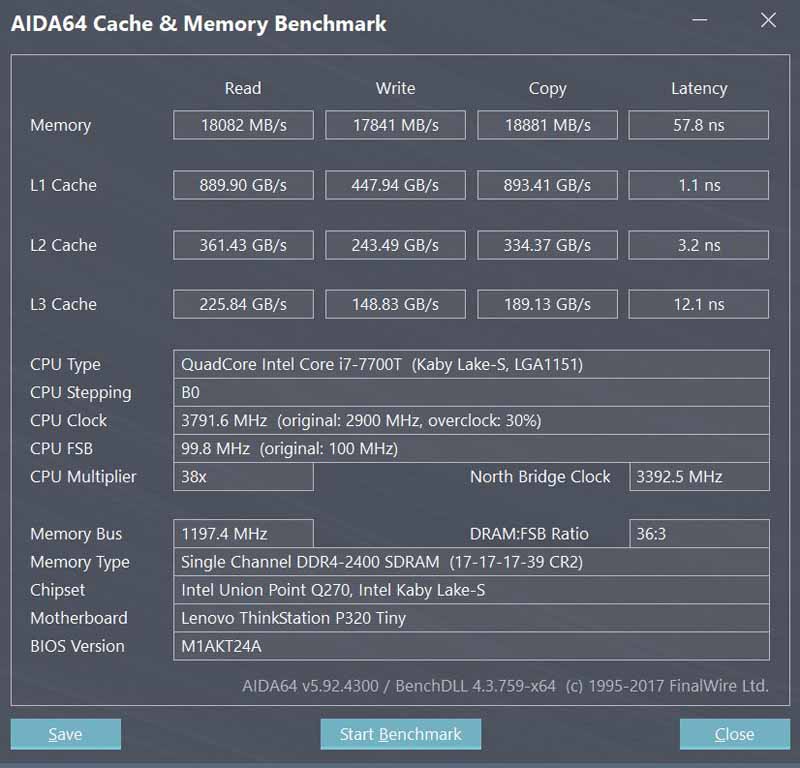
With only one 16GB SODIMM installed we only see single channel memory performance, we would expect to see double these numbers if a second SODIMM installed.
Cinebench R15
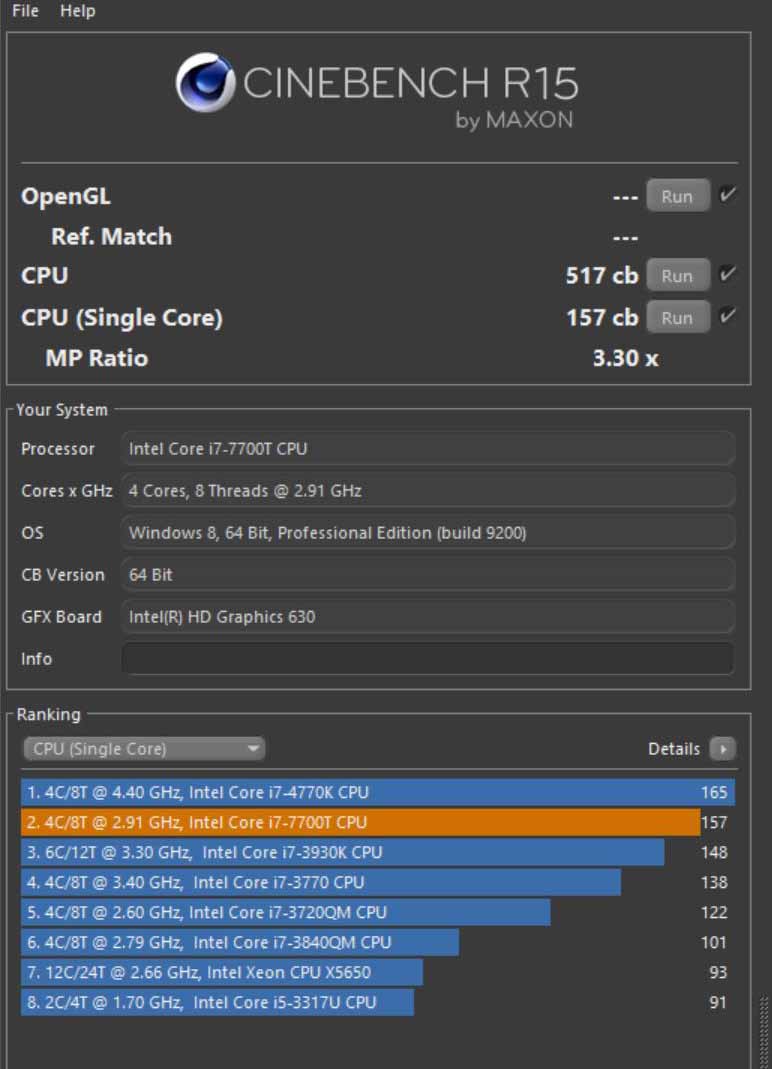
With Cinebench R15 we see fairly good single thread performance, while multi-threaded results appear on par with what we would expect in a lower power application.
Geekbench 4
Each CPU workload models a real-world task or application, ensuring meaningful results. These tests are complex, avoiding simple problems with straightforward memory-access patterns, and push the limits of your system.
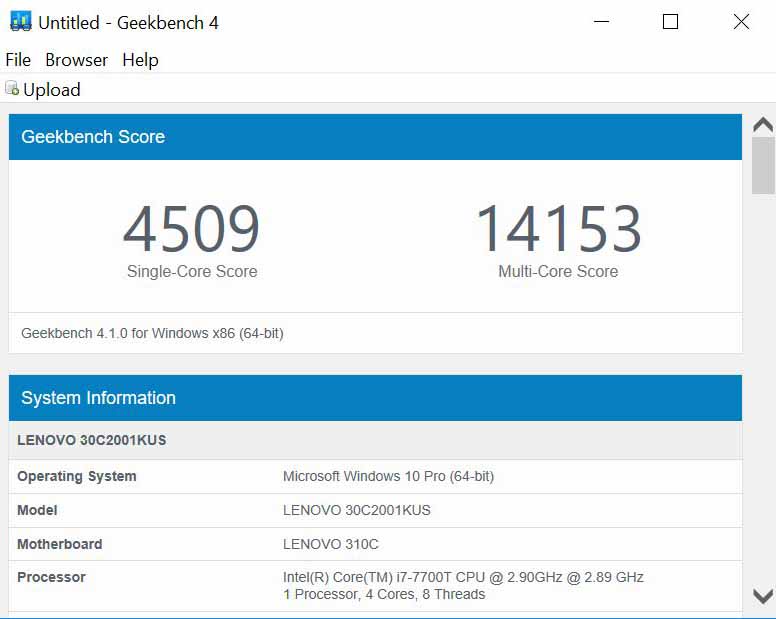
Our Geekbench 4 scores show strong results in both processor and graphics benchmarks.
PCMark 8
With PCMark 8 you can test the performance of all types of PC, from tablets to desktops. With five separate benchmark tests plus battery life testing, PCMark 8 helps you find the devices that offer the perfect combination of efficiency and performance. PCMark 8 is the complete PC benchmark for home and business.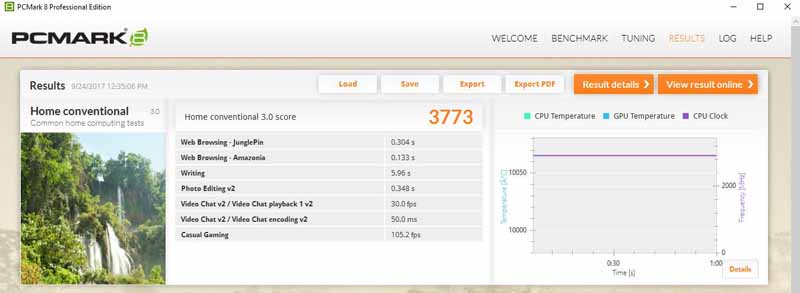
The 3773 rating is certainly good for a compact system of this size.
PassMark 9.0
Passmark 9.0 is another benchmark that tests the entire system and generates a PassMark rating.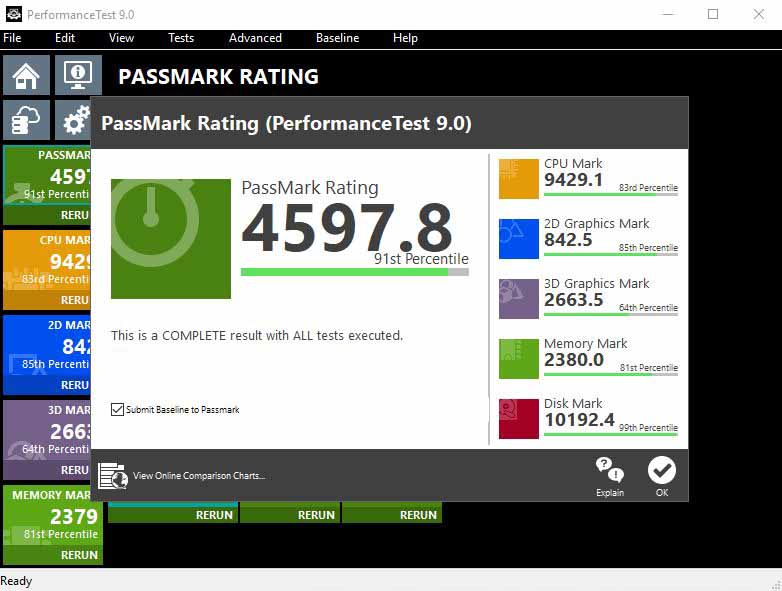
Overall, this is a good result for such a compact system.
Power Test
For our power testing needs, we use a Yokogawa WT310 power meter which can feed its data through a USB cable to another machine where we can capture the test results. We then use AIDA64 Stress test to load the system and measure max power loads.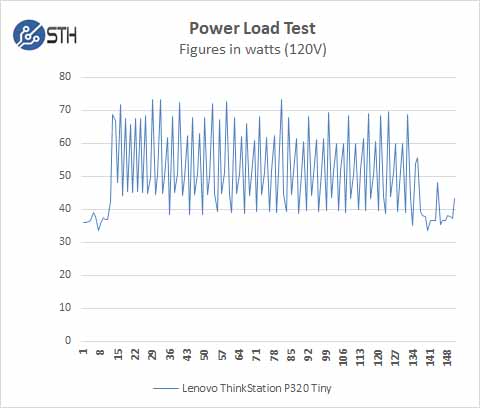
AIDA64 Stress Test is a very demanding test and pushes the P320 Tiny to the max. We can see thermal throttling happening in our results. During this stress test, the cooling fan does spool up to 100% and makes a noticeable amount of noise.
Conclusion
Our initial reaction to the P320 Tiny is WOW; this is a very cool product. Not only does it pack impressive components inside it is very small and takes up next to no space on your desk. Powering full 4K displays for traders, VDI deployments, high detail for movies, games, and applications is demanding, yet the P320 Tiny did not miss a beat with our expectations. P320 Tiny operation is fast and smooth, aided by the Toshiba 512GB NVMe SSD and Intel Core i7-7700T which gives this Tiny machine and major punch in performance.
Optional extras expand the P320 Tinys ecosystem and allow a variety of mounting and I/O expansion capabilities.
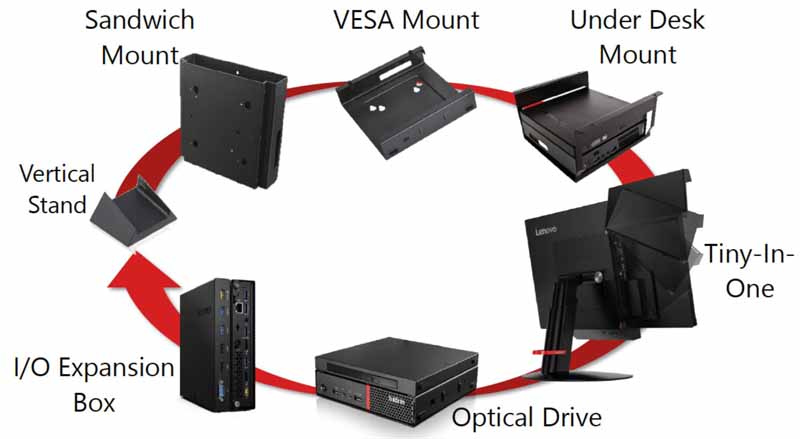
With all the impressive features the P320 Tiny has, it does have its limits, running very heavy application loads will cause the cooling fan to spin up to noticeable levels and can even cause thermal throttling which can have a negative effect on performance. With that in mind, we expected this from a unit of this size with limited cooling space. In our testing, moderate application loads performed very well, and short heavy load tasks also resulted in good results.

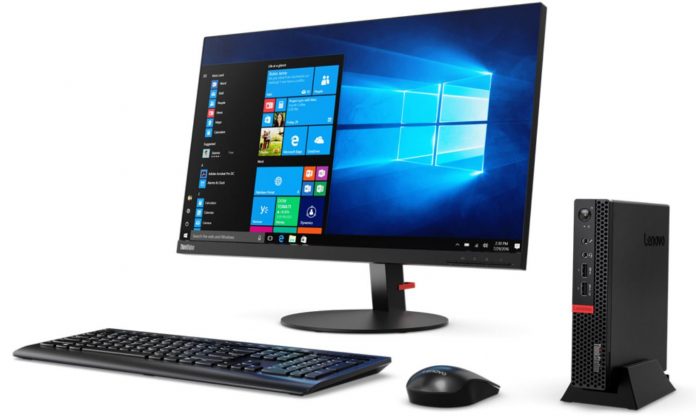
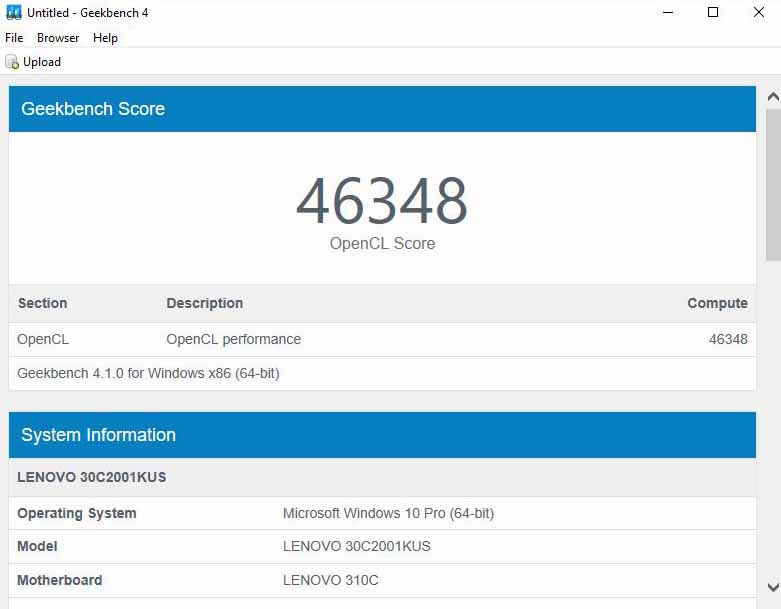



Mr. William Harmon Sir
I am almost Totally Blown away on this Lenovo ThinkStation P320
How is this Possible it can do all this?
Im going to get 2 P320’s Immediately for my wife and daughter.
Look forward in more Great Reviews Mr. Harmon
Eric Soovajian
Isn’t the Dell Optiplex 3050 Micro just as great? I have the 3020 Micro for about 3 years now, love it, these small machines are all one needs in an office environment.